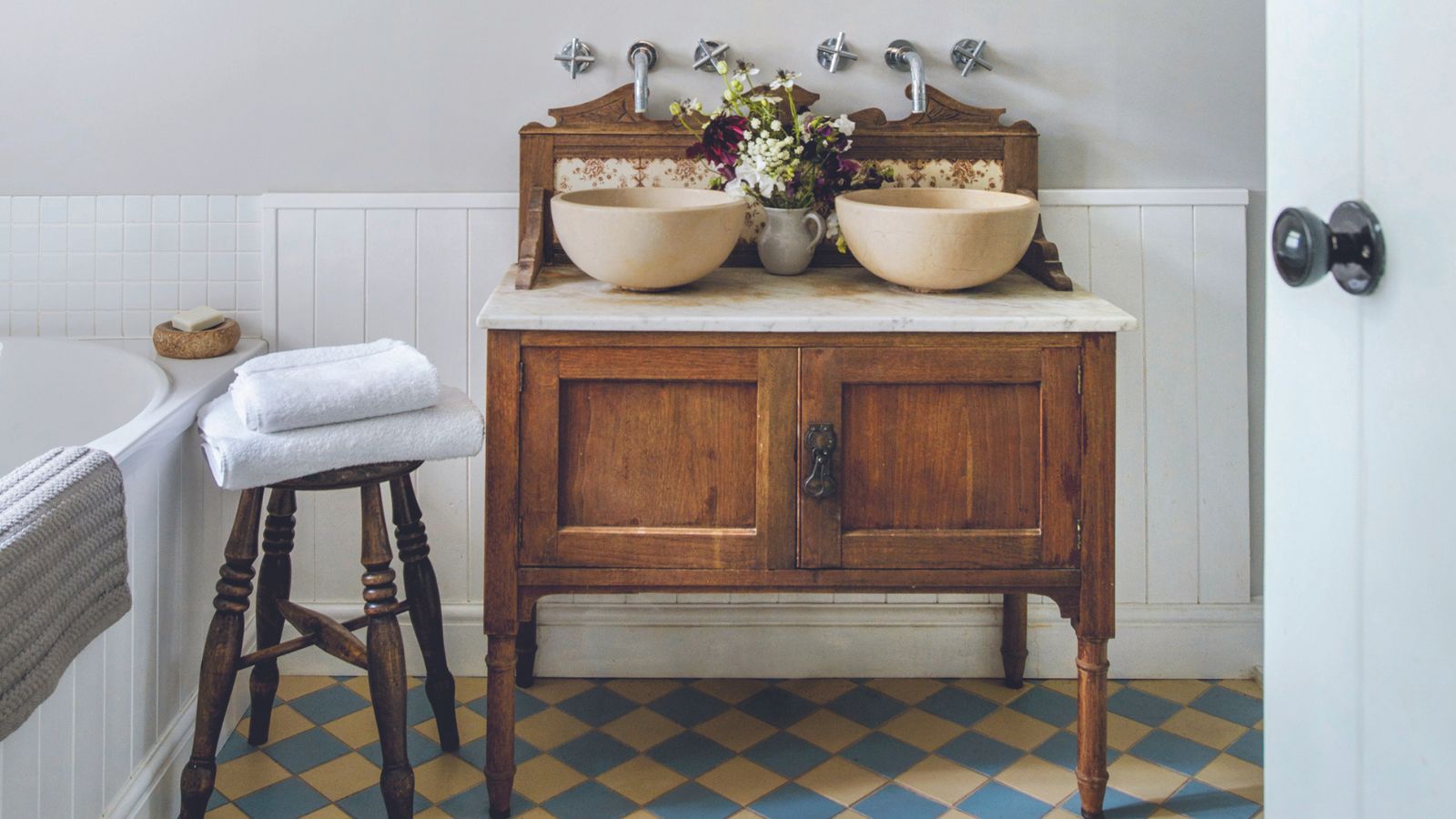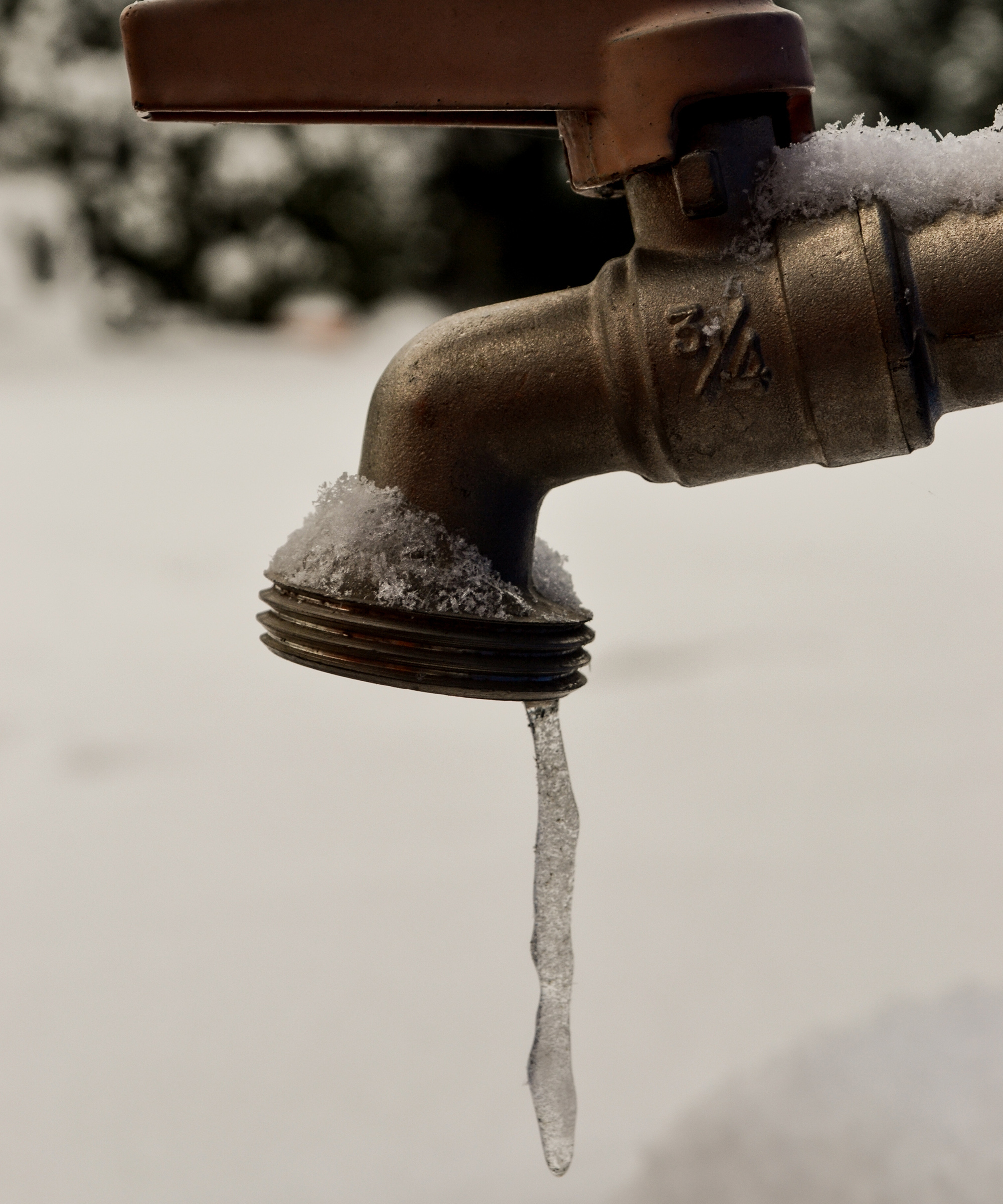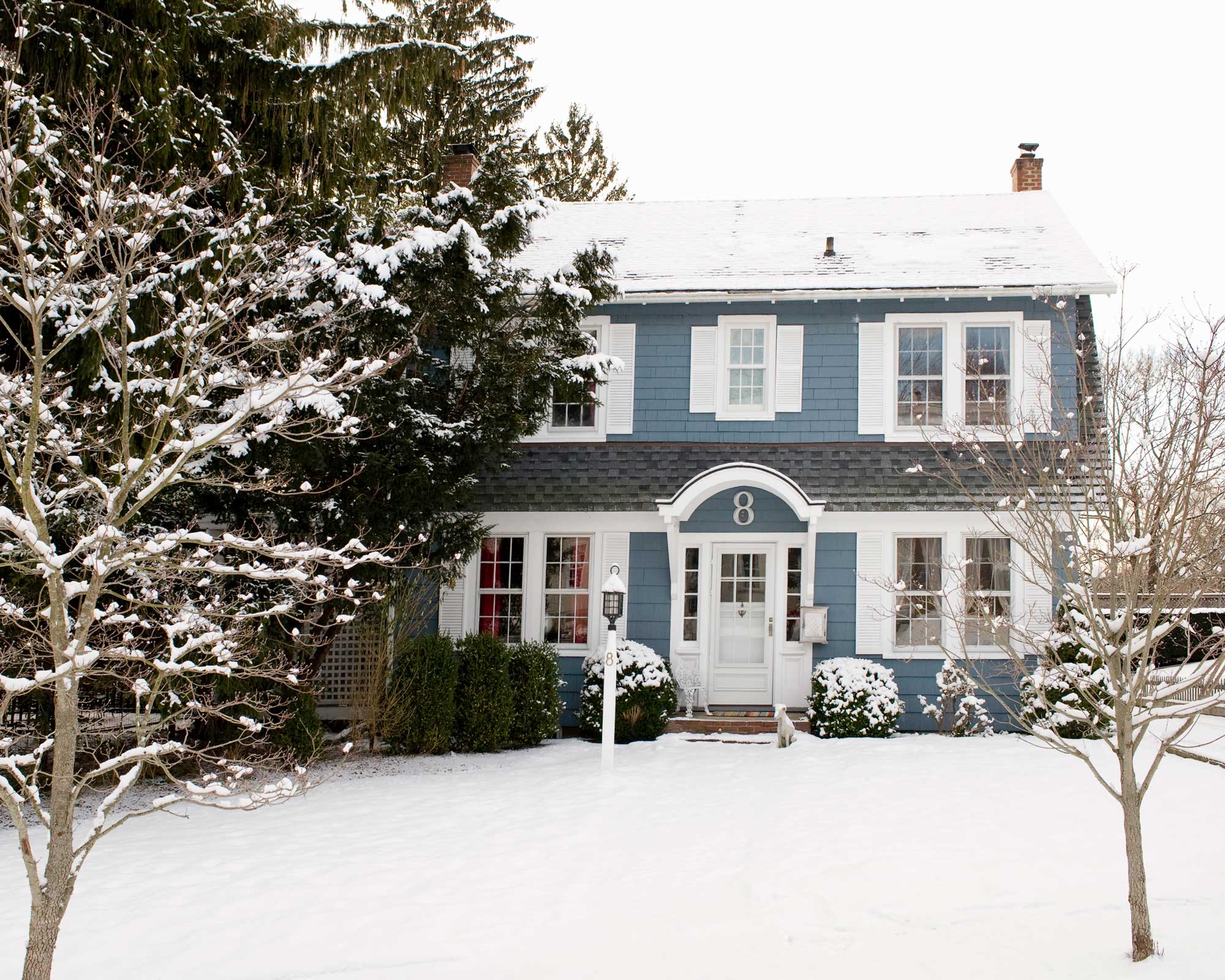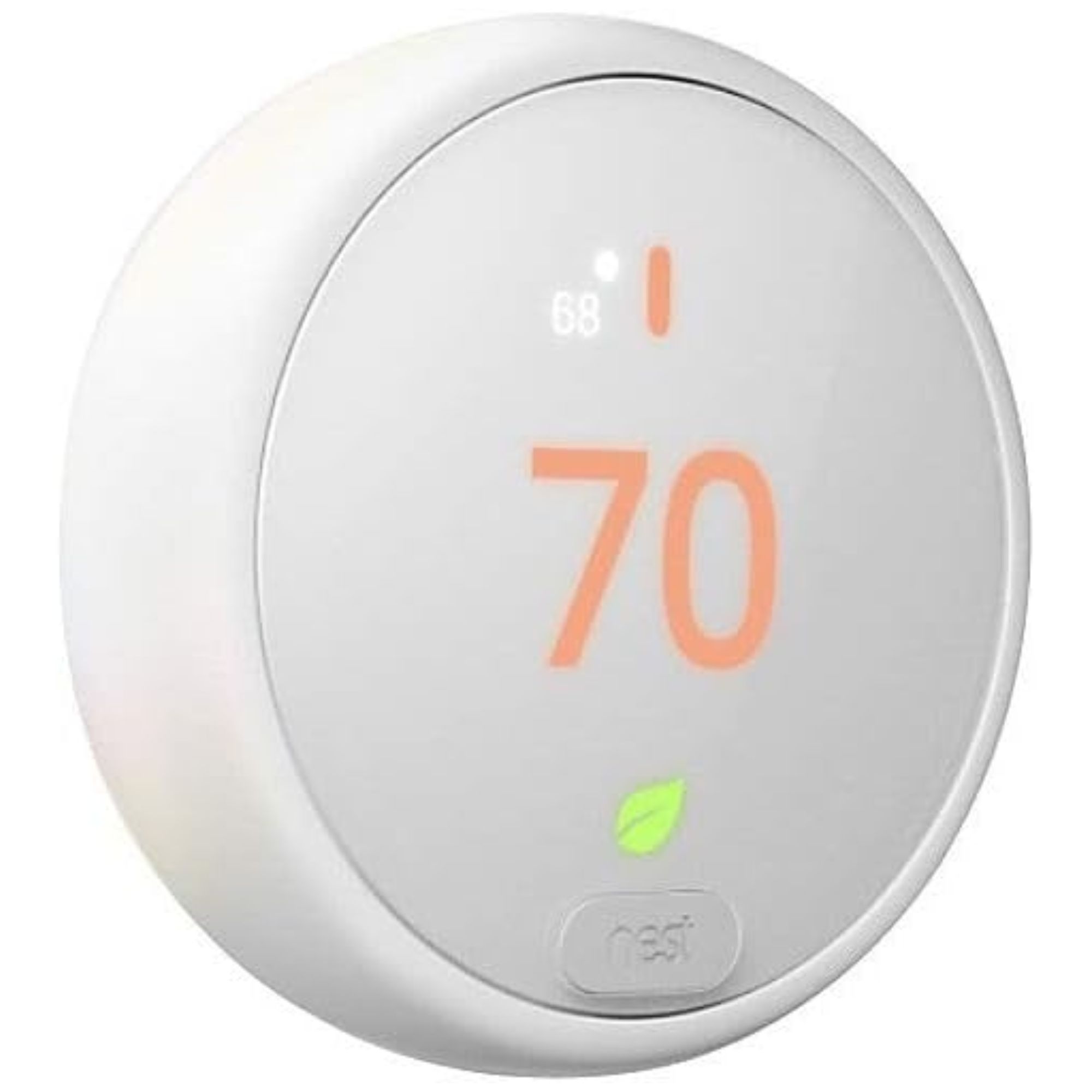
There's lots to love about winter, but the cold, harsh weather can cause issues both inside and outside your home. In particular, frozen pipes can leave you without running water, worrying leaks and expensive repairs.
Importantly, while there are a number of ways to avoid this occurring, one of the best ways to be prepared is knowing when your pipes are most at risk of freezing, and the sudden temperature changes that might catch you out when the weather is milder.
Here, HVAC and plumbing pros share their advice on when exactly to worry so you can take steps to winterize home plumbing indoors and protect your pipes.
When to worry about pipes freezing

As soon as temperatures drop below 32° Fahrenheit, there is a significant risk of pipes freezing.
Justin Cornforth, owner of Ace Home Co., warns, 'You definitely need to worry about this problem when the temperature is below 32°F, and the real danger if it's 20°F or even lower. However, most people mistakenly assume that frozen pipes only happen when it's crazy cold, but the real danger is sudden temperature drops, especially after a mild day.'
This is because pipes don't have time to adjust to plummeting temperatures, which is why it's so important to prepare your home for a freeze. To do so, Justin recommends checking your indoor humidity, using a hygrometer such as the bestselling ThermoPro TP50 Digital Hygrometer available at Amazon.
'Low humidity means dry air is sucking moisture from everywhere – including pipes,' he explains. 'If you’ve checked the weather forecast and you know that a cold front is coming, touch exposed pipes before going to bed, and if they are ice-cold – you’re at risk overnight.'
To combat this, it's advised to set your thermostat to the perfect temperature to run your heating to avoid frozen pipes. This 'Goldilocks' temperature is usually advised at between 55-60°F.
Joesph Wade, VP of operations at Benjamin Franklin Plumbing, also recommends making sure to have your heater, furnace or other HVAC system serviced ahead of peak wintertime. 'The last thing you want is so deal with a broken down heater as the temperatures begin to drop,' he warns.
1. Visible signs on pipes

It goes without saying, but visible signs on pipes are an obvious way to spot trouble is on the way.
Josh Rudin, owner and CEO of Asap Restoration LLC advises looking for hairline fractures, caused by frozen water. While this doesn't qualify as a burst pipe, it will equally cause water damage if left unattended. Small leaks in the form of hairline cracks will also be the first place that a burst will occur the next time the pipe freezes.
Additionally, HVAC expert Justin says, 'Obviously, if you see frost on pipes it means freezing has already started inside. Therefore, you need to take action to protect your pipes.'
This is a prime example of when to drip faucets, open cabinet doors in the kitchen, and warm up cold areas with space heaters, such as the affordable Mainstays 1500W Ceramic Fan-Force Electric Space Heater available at Walmart.
'To warm up pipes, you can place a small space heater near vulnerable pipes and set it to low,' says Justin. 'It will be enough to keep the area above freezing.'
Additionally, to prevent this, invest in pipe insulation, such as Duck Brand Foam Pipe Covers available at Amazon, which comes pre-slit with a self-sealing adhesive edge, or simply wrap pipes with insulation tape, such as the number one bestselling Redford Supply Co. Pipe Insulation Tape available at Amazon. This is particularly important in typically unheated areas, like basements and attics.
'You'd better look for insulation with foam and foil,' says Justin. 'It'll keep warm inside better.'
And, in a pinch, Justin says bubble wrap and duct tape is a quick fix that works 'surprisingly well.'
Don't forget to also protect outdoor faucets from freezing, using an insulating faucet cover.
All prices correct at time of publication.

This effective outdoor faucet cover comes fully assembled and ready to use, and is durable, meaning it will last for frosty seasons to come.
2. When on vacation

Frozen pipes often happen overnight and can also be an issue when a home is left empty for an extended length of time.
Andy Kerr, founder of BOXT, says, 'When you spend time away from home during winter months, it is always important to prepare your property, especially the pipes, as they can become susceptible to freezing, causing extensive damage.'
'The aftermath of this is often expensive, and so implementing preventative measures before you head off on your holiday is vital.'
Therefore, Andy recommends maintaining adequate heating while you are away. The ideal temperature to set your thermostat when on winter vacation is at least 50°F, to keep the pipes warm. If you have a smart thermostat, such as the Amazon Smart Thermostat available at Amazon, you can control when the heating comes on remotely from your phone, and easily adjust your home's temperature according to the weather.
'If you plan to venture on holiday during colder times of the year, it's a good idea to turn off your mains stop tap and open up the lowest sink or bath tap to relieve the initial pressure on the pipework,' continues Andy. 'Turn the bath or sink tap off and leave the stop tap off too. This will limit any issues with pipes freezing and cracking, or unwanted leaks while you are away.'
If you're heading off for a particularly long period of time, it's worth asking a trusted neighbor of friend who lives nearby to occasionally check in on your home, to ensure the heating is on and functioning properly.
'This is also a good way to check for any signs of a water leak, so that actions can be taken in a timely manner if a pipe has burst,' says Andy.
Letting your outdoor faucet drip can also prevent freezing, too.

This programmable smart thermostat programs itself to help you save energy, automatically adjusting to help you to save money at home.
3. Telltale smells and sounds

Bubbling and whistling sounds when you use the sink or flush the toilet could also be a sign of frozen water inside the pipes, so if you notice something unusual, don't ignore it. The same goes for bad smells coming from the faucet or drain.
Caleb John, director and plumbing expert at Exceed Plumbing and Air Con, says, 'Activation of a water tap producing gurgling or rattling noises can signal ice buildup inside your pipes.
'The unusual smell emerging from a drain signals that a blocked pipe is releasing trapped air or debris, yet people often miss this key indicator.'
If you notice either of these, you can take steps to thaw frozen pipes to avoid them bursting, or call a pro to take a look.
Additionally, Matt Kunz, president at Mr. Rooter Plumbing, a Neighborly company, suggests, 'Homeowners can also install smart water leak detectors (such as the Govee WiFi Water Sensor available at Amazon) to monitor for potential issues and alert them of any potential leak issues.'
FAQs
Can pipes freeze in one night?
As surprising as it might sounds, HVAC expert Josh Rudin says, 'Water pipes with cold water in them experiencing freezing temperatures in the evening can absolutely freeze and burst all in one evening.
'Many people think that the pipe has to freeze all the way through the whole line in order for a burst to occur, but, in reality, a small section can freeze and cause major problems while the rest of the line still has liquid water in it.'
For this reason, it's crucial to be aware of which home maintenance mistakes never to make in winter.
Can you flush the toilet when the pipes are frozen?
Your pipes being frozen is certainly a reason why your toilet won't flush. This can cause the toilet to crack, so it's imperative to act quickly and call in an expert to sort it out before irreparable damage occurs.
Running water is something we take for granted, so it pays to know the signs to look out for, especially given the drastic temperature changes that can occur over winter and into early spring. Other draft-proofing measures around the home can help to maintain a warmer ambient temperature, making your home feel more comfortable and reducing the risk of plumbing headaches.







